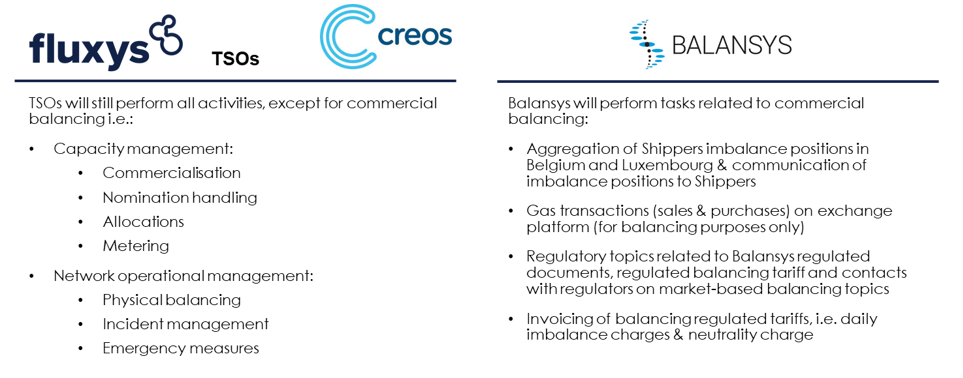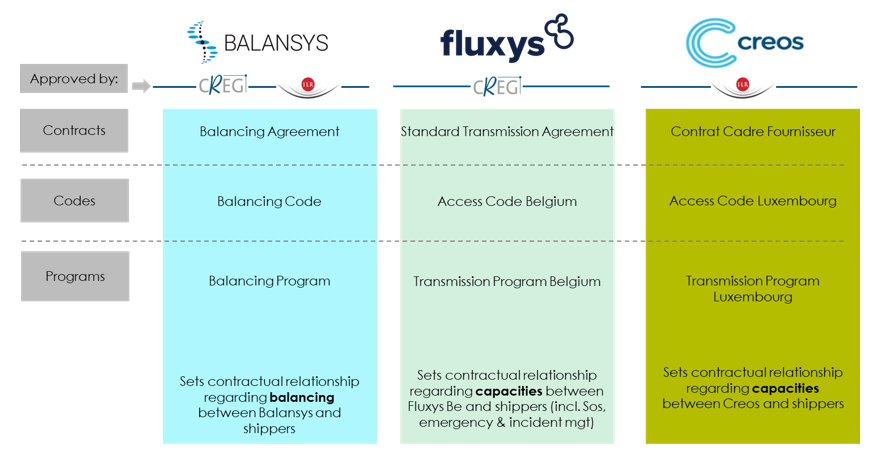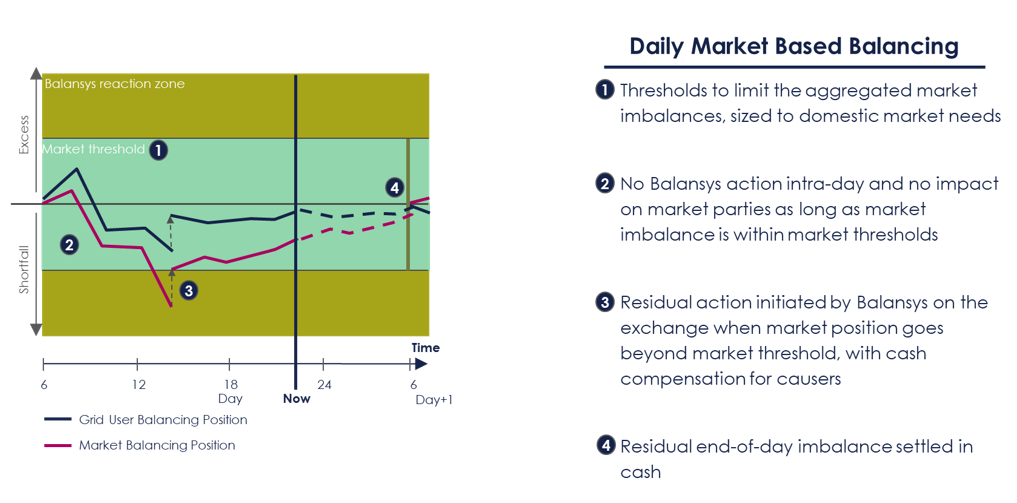A single integrated gas market for Belgium and Luxembourg
Roles and Responsibilities
On the 1st October 2015, Fluxys Belgium and Creos Luxembourg, merged the Belgian and Luxembourg H-gas markets in one cross-border integrated gas market.
The BeLux area is an entry-exit system with a notional trading point “Zeebrugge Trading Point” or “ZTP” and where no capacity must be subscribed to transport gas from Belgium to Luxembourg or inversely.
The balancing regime within the BeLux area has been harmonized, in this context Fluxys Belgium and Creos Luxembourg created “Balansys” which has been appointed as the Balancing Operator which offers the balancing services in the BeLux area. Fluxys Belgium and Creos Luxembourg remain responsible for all activities except for the commercial balancing.

Regulatory framework and contractual set-up
As a shipper in the BeLux area, shipper should:
- sign a Standard Transmission Agreement with Fluxys Belgium in order to become active in Belgium and/or a “Contrat Cadre Fournisseur” with Creos Luxembourg in order to become active in Luxembourg and comply with the creditworthiness requirements of the Transmissison System Operator(s), and
- sign the Balancing Agreement with Balansys and comply with the creditworthiness requirements of the Balancing Operator.
Hereafter you find an overview of the regulatory framework between the Transmission System Operator(s), the Balancing Operator and the shipper.

Balancing Model
Shippers are primary responsible for the balancing, this means that Balansys doesn’t take any action as long as the market imbalance is within the market thresholds.
- When during the gas day the market balancing position goes beyond the market threshold, Balansys will take an action to cover this market shortfall or excess and those shippers contributing to this market shortfall or excess (causers) will be financially settled for their share.
- At the end of the gas day, each shipper is settled to zero so that each shipper will start the next gas day with a zero position. This residual end-of-day imbalance is also settled in cash.

- Questions regarding our Products & ServicesCommercial Team